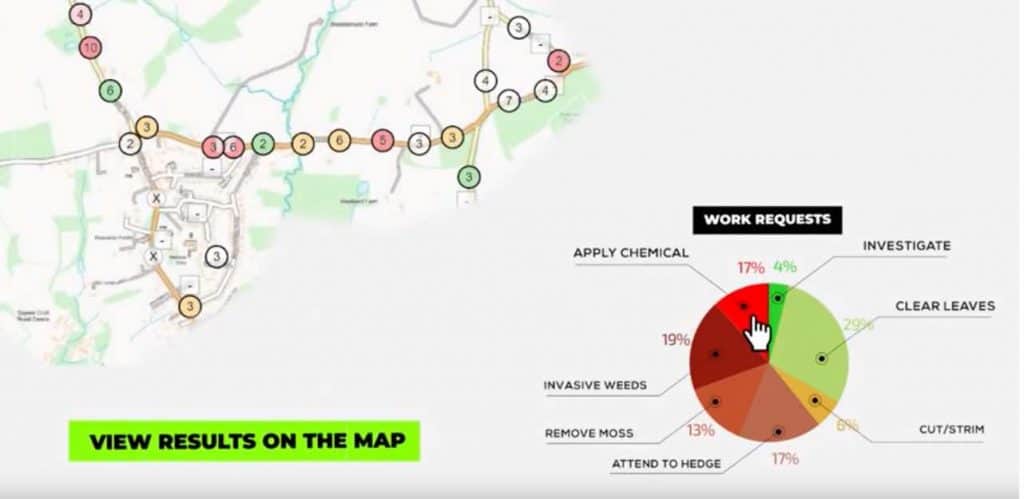The Net Worth Of Trees, Map Your Assets
The world is beginning to realise the ever growing importance of the benefits that trees bring to our planet. Defra have announced a new £10 million Urban Tree Challenge Fund grant to plant more than 130,000 trees across England’s towns and cities over the next two years.
With all the planned tree planting programs around the UK, a solid platform is needed to mange the process and the ongoing work.
At KaarbonTech we have developed the perfect software solution in Tree SMART; the tree asset management software to schedule all works and maintenance cycles.
Have you ever pondered about the value of trees. We don’t mean how much they cost to buy and plant. It’s the value they give to the atmosphere, people and the land around them.
What Could be of Value
Leeds4Trees is a new collaboration between LEAF, the United Bank of Carbon (UBoC), and Leeds City Council that will increase our knowledge on the importance of trees and green spaces in urban areas, whilst also raising funds for vital conservation efforts overseas.
In order to score a tree’s importance they set out to place a value on each property of the tree using all the information they could. These included any benefits of a tree that could add value to their environment.
CO2 is one of the major contributing elements to the greenhouse effect. Trees trap CO2 from the atmosphere and make carbohydrates that are used for plant growth. They give us oxygen in return
Trees also help to reduce ozone levels in urban areas
The Trees reduce urban runoff and erosion by storing water and breaking the force of rain as it falls
Trees also absorb sound and reduce noise pollution
Additionally trees shade asphalt and buildings, reducing contributions towards the “Urban Heat Island” effect.
By calculating all these values, an estimate can be placed on an individual tree and its benefits on the surrounding ecosystems.
Trees strategically placed around buildings can reduce the need for air conditioning required to keep buildings at a suitable temperature. They can actually reduce the air temperature from between 2C to 8C.
 Urban Green Infrastructure
Urban Green Infrastructure
Green Infrastructure (GI) is now a big part of any town or city’s future planning. This is all part of the race to get urban spaces more people-friendly and remove airborne pollutants from the air. GI demands are increasing, especially with the rise in protesters demanding local authorities declare a climate emergency.
Many of the benefits of GI have a direct bearing on human health, translating into health costs saved and working days gained. For urban inhabitants, GI can provide space for recreation and physical activity, and confers benefits for mental health too.

In our streets, GI’s potential to improve air quality primarily lies in its ability, not to remove pollution by deposition, but to control its dispersion (i.e., distribution close to source) and thereby reduce public exposure.
Trees and Sustainable Urban Drainage Systems
Something taken for granted for a very long time is the fact that trees also store excess rainwater. Whilst it’s a simple fact, once you consider this you can start to understand some of the other benefits they bring. This is something scientists are researching now more than ever to fully evaluate the advantages trees bring.
Combining Big Data – Tree SMART and Gully SMART
We know that the trees absorb water but are they able to help mitigate against localised flooding? Incorporating sustainable GI alongside drainage planning, would we be able to reduce or even stop flooding?
Managing asset types in isolation is sensible from a routine maintenance perspective, however combining Big Data sets can help to shed light on emerging patterns. Combining data collected through Tree SMART and Gully SMART would enable you to draw analyse the wider highway infrastructure to examine relationships between different assets. Statements such as ‘a greater number of trees in an area leads to a reduced flood risk’ are more easily verified using multiple data sets together to give you greater accuracy.
Urban Tree Planting Failures
It is estimated that 25% of all trees planted fail (Source Trees in Towns II). This could be down to many factors especially in urban planting. It could be the particular species of tree has strains of disease within them, or the type of tree pit used or the quality and depth of the soil itself. One of the main reasons for most of the failures are down to the lack of watering cycles ensuring the tree is adequately hydrated through the embryonic stages of its life cycle. Using Tree SMART you can program these cycles of work to improve the survival rate of your tree planting.
Using Tree SMART you can record all this data at the time of planting along with photographic documentation. This information can then be used to collate all failures and successes thus ultimately improving the success rate of future planting projects. The Internet of Things is going to become more common in the pursuit of creating the ultimate in smart cities.
Trees boost wildlife
Trees host complex microhabitats. When young, they offer habitation and food to amazing communities of birds, insects, lichen and fungi. When ancient, their trunks also provide the hollow cover needed by species such as bats, woodboring beetles, tawny owls and woodpeckers.
One mature oak can be home to as many as 500 different species. Richmond Park is full of such trees, which is one of the reasons it has been designated a National Nature Reserve and Site of Special Scientific Interest.
Trees grow the economy
People are attracted to live, work and invest in green surroundings. Research shows that average house prices are 5-18% higher when properties are close to mature trees. Companies benefit from a healthier, happier workforce if there are parks and trees nearby.
World Health Organisation
According to World Health Organisation research, 9 out 10 people breathe air with high levels of pollutants. Pollutants like black carbon that penetrate deep into the lungs and cardiovascular systems.
They estimate that around 7 million people die every year due to exposure to fine particulates in the polluted air that lead to strokes, heart disease, lung cancer and pulmonary disease. (Source)
Tree SMART
Managing your Urban planting is a daunting task but with the aid of Tree SMART it doesn’t have to be.
Manage your tree stock in less time
Highlights new efficiency improvements
Improves communications between the office and the field
Presents data in a simple format for easy and quick decision making.
Helps you to monitor KPI’s easily
Protects against litigation claims
When used in conjunction with Grass SMART then you can also manage your wild verges to increase your Bio Diversity.
Tree Planting Proposals
The Northern Forest
The forest will span 120 miles, connecting Manchester with Liverpool and Lancaster in the west and Sheffield, Leeds and Hull to the east, benefiting 13 million residents and generating £2.5 billion in social, economic and environmental benefits. It would also absorb up to 7.5m tonnes of carbon.

This is an ambitious scheme in that it wants to plant 50 million trees in the next 25 years. This equates to 2 million trees a year, or nearly 5,500 trees a day.
The community forests in the north – The Mersey Forest, City of Trees, White Rose Forest, and HEYwoods – are working with the Woodland Trust to bring the Northern Forest to life.


-1682341390.jpg)